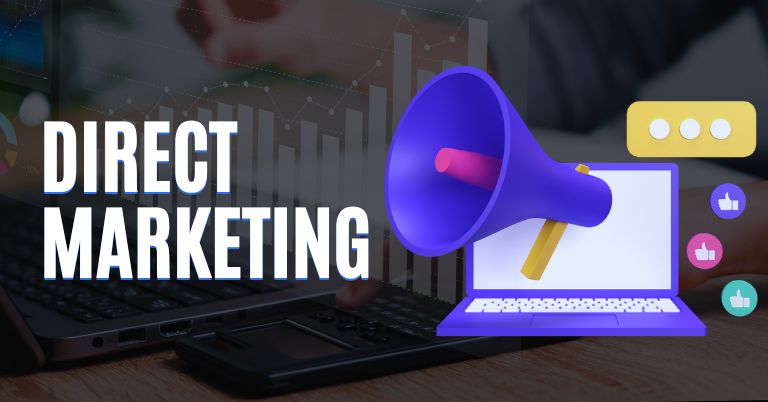Employing native advertising can boost sales by seamlessly integrating promotional content into the user experience, leading to increased engagement and conversions. Native ads blend in with the surrounding content, making them less intrusive and more likely to be trusted and acted upon by the audience.
By adapting to the look and feel of the platform, native ads can enhance brand visibility and provide a non-disruptive way to reach potential customers. With their contextual relevance and ability to target specific audience segments, native ads can effectively drive sales and generate more revenue for businesses.
Let's See the Topic Overview
Understanding The Basics Of Native Advertising
Discover the power of native advertising for boosting sales. Explore how this effective marketing strategy can help you generate more revenue for your business.
Native Advertising vs. Traditional Advertising
Native advertising has gained significant popularity in recent years as a powerful marketing strategy that can drive sales and boost revenue. In contrast to traditional advertising methods, native advertising seamlessly blends in with the user experience, making it a highly effective approach.
By understanding the basics of native advertising, businesses can harness its potential to generate more sales. Let’s delve into the key differences between native advertising and traditional advertising:
- Native Advertising:
- Native ads are designed to match the form and function of the platform on which they appear, seamlessly blending in with the user experience.
- These ads provide valuable and relevant content to the target audience, ensuring they are not intrusive or disruptive.
- The goal of native advertising is to engage users in a natural way, creating a positive brand perception and building trust.
- Native ads can appear in various formats, such as sponsored articles, promoted social media posts, in-feed ads, and recommended content widgets.
- Traditional Advertising:
- Traditional advertising relies on interrupting the user experience with explicit promotional messages.
- Print ads, TV commercials, and radio spots are traditional advertising mediums that aim to capture audience attention through interruption.
- These ads are usually visually or audibly distinct from the content they accompany, often standing out as separate entities.
- Traditional advertising typically relies on repetition and frequency to create brand awareness and influence purchasing decisions.
While traditional advertising focuses on interruption and repetition, native advertising takes a more subtle approach, blending seamlessly with the user experience. Native ads prioritize providing value and relevance to the audience, resulting in higher engagement and increased sales potential. Understanding the distinctions between these two approaches is crucial for businesses aiming to drive sales through native advertising.
Leveraging Native Advertising For Increased Brand Awareness
Native advertising is a powerful strategy that can enhance brand awareness and boost sales. By seamlessly integrating promotional content into a user’s online experience, businesses can effectively reach their target audience and generate more sales.

Native advertising can be a powerful tool for generating more sales. By seamlessly blending in with the surrounding content, native ads have the potential to engage and captivate your target audience, increasing brand awareness and, ultimately, driving sales. To effectively leverage native advertising for increased brand awareness, consider the following strategies:
Creating Compelling Native Ad Content:
- Craft attention-grabbing headlines: Grabbing your audience’s attention from the get-go is crucial. Compelling headlines can pique curiosity and entice readers to click on your native ads.
- Tell a story: Weaving a narrative within your native ad content can make it more relatable and emotionally engaging. Stories have a way of capturing people’s attention and leaving a lasting impression.
- Focus on value: Ensure that your native ad content offers something of value to the audience. It could be helpful tips, informative insights, or entertainment. By providing value, you enhance your brand’s credibility and encourage engagement.
- Incorporate visuals: Visual elements such as eye-catching images or videos can significantly enhance the impact of your native ads. Humans are visual creatures, and compelling visuals can draw people in and leave a lasting impression.
Choosing The Right Platform For Native Ads:
- Define your target audience: Before selecting a platform for your native ads, be clear about your target audience’s demographics, interests, and behaviors. This information will help you identify platforms that align with your audience’s preferences.
- Research platform options: Look into different native advertising platforms and evaluate their relevance to your brand and audience. Consider factors such as the platform’s reach, content alignment, and engagement metrics.
- Consider user experience: Ensure that the platform you choose provides a seamless user experience. The native ads should seamlessly integrate into the user’s browsing or reading experience, without disrupting or irritating them.
- Test and optimize: It’s important to continuously test and optimize your native ads across different platforms. Monitor performance metrics, analyze data, and make data-driven decisions to improve your campaigns over time.
By creating compelling native ad content and carefully selecting the right platform, native advertising can become a powerful tool for increasing your brand’s awareness and driving sales. Remember, the key lies in capturing your audience’s attention, providing value, and delivering a seamless user experience.
With a thoughtful approach and ongoing optimization, native advertising can propel your brand to new heights.
Strategies For Using Native Advertising To Drive Conversions
Discover effective strategies to leverage native advertising for driving conversions and boosting sales. Learn how to seamlessly incorporate native ads into your marketing campaigns, engage your audience, and increase conversion rates. Harness the power of native advertising to achieve your sales objectives and propel your business forward.
Native advertising is a powerful tool for driving conversions and boosting sales. When done right, native ads seamlessly blend into the user experience, making it more likely for potential customers to engage with your brand. In this section, we will explore two strategies for using native advertising to drive conversions: native ad targeting and retargeting, and incorporating call-to-action within native ads.
Let’s dive in.
Native Ad Targeting And Retargeting:
- Targeting: By targeting your native ads effectively, you can ensure that they reach the right audience at the right time. Consider the following targeting options:
- Demographic targeting: Tailor your native ads based on factors such as age, gender, location, and interests to reach your target audience accurately.
- Contextual targeting: Place your ads on websites and platforms that align with your product or service. This ensures that your ads are seen by users interested in related content.
- Behavioral targeting: Utilize data on user behavior, such as browsing history or purchase patterns, to target your ads to users who are more likely to convert.
- Retargeting: Retargeting is an effective way to re-engage users who have shown interest in your brand or products. Consider implementing the following strategies:
- Website retargeting: Serve personalized native ads to users who have visited your website but have not yet converted. This can be done by placing a retargeting pixel on your website to track user behavior and serve targeted ads accordingly.
- Cart abandonment retargeting: If a user added items to their cart but did not complete the purchase, retarget them with native ads showcasing the items they left behind. This gentle reminder can prompt them to come back and complete the purchase.
Incorporating Call-To-Action Within Native Ads:
- Clear and compelling CTAs: Native ads should include a clear and compelling call-to-action that directs users to take the desired action. Consider these tips:
- Use action verbs: Start your CTA with action verbs that inspire users to take immediate action, such as “Buy Now,” “Learn More,” or “Sign up.”
- Create a sense of urgency: Incorporate time-limited offers or limited availability to create a sense of urgency, encouraging users to act quickly.
- Placement and design: Ensure that your CTA is prominently displayed within the native ad, using visually appealing design elements to make it stand out.
- Test and optimize: Continuously test different CTAs to identify the most effective ones for your target audience, and optimize your ads based on the results.
By effectively targeting and retargeting native ads and incorporating compelling CTAs, you can maximize the potential of native advertising to generate more sales and drive conversions.
Measuring The Success Of Native Advertising Campaigns
Native advertising campaigns can be effectively employed to boost sales. By measuring the success of these campaigns through key performance indicators (KPIs) like click-through rates and conversion rates, businesses can optimize their strategies to generate more sales and drive revenue growth.
Native advertising is a powerful tool for generating more sales, but how do you know if your campaigns are delivering the desired results? Measuring the success of native advertising campaigns is crucial to ensure that you are optimizing your efforts and driving meaningful business outcomes.
By identifying key performance indicators (KPIs) and analyzing your ad performance, you can make data-driven decisions and refine your strategies for maximum impact. Here’s how you can measure the success of your native advertising campaigns:
Key Performance Indicators For Native Ads:
- Click-through rate (CTR): Measure the percentage of users who click on your native ads compared to the total number of impressions. A higher CTR indicates that your ads are compelling and engaging, driving more traffic to your website.
- Conversion rate: Track the percentage of visitors who complete a desired action, such as making a purchase or filling out a lead form. A higher conversion rate suggests that your native ads are effectively converting users into customers.
- Return on ad spend (ROAS): Calculate the revenue generated from your native ad campaigns compared to the amount spent on advertising. A positive ROAS indicates that your ads are driving profitable returns on your investment.
- Cost per acquisition (CPA): Determine the average cost of acquiring a new customer through your native ads. A lower CPA signifies that you are acquiring customers at a more efficient cost, maximizing your advertising budget.
- Engagement metrics: Analyze metrics like time spent on a page, scroll depth, and social shares to gauge the level of user engagement with your native ads. Higher engagement indicates that your ads are resonating with your target audience and capturing their attention.
Analyzing And Optimizing Native Ad Performance:
- A/B testing: Conduct experiments by creating different variations of your native ads and comparing their performance. Test different headlines, images, ad formats, and placements to identify the most effective combinations for driving sales.
- Audience targeting analysis: Understand your target audience’s demographics, interests, and behaviors to ensure that your native ads are reaching the right people. Analyze data from your ad platform to refine your audience targeting and drive higher engagement and conversions.
- Ad format and placement analysis: Evaluate the performance of different ad formats (such as in-feed, recommendation widgets, and sponsored content) and ad placements (on websites, social media, and mobile apps) to determine which combinations work best for your sales objectives. Optimize your native ad strategies accordingly.
- Ad creative analysis: Assess the performance of your ad creatives, including headlines, images or videos, and ad copy. Identify what resonates most with your audience and refine your creative elements to enhance engagement and drive sales.
- Customer journey analysis: Track how users interact with your native ads, from the initial click to the final conversion. Identify any drop-off points or bottlenecks in the customer journey, and optimize your ads and landing pages to streamline the path to purchase.
By measuring the success of your native advertising campaigns and continuously analyzing and optimizing their performance, you can leverage this powerful marketing strategy to generate more sales and achieve your business goals. Keep refining your approach based on the data and insights you gather to ensure sustained success in the competitive world of native advertising.
Case Studies: Successful Implementation Of Native Advertising
Native advertising is a powerful strategy to boost sales. Explore successful case studies that demonstrate the effective implementation of native advertising, providing valuable insights and techniques.
Native advertising is a powerful tool that can be employed to generate more sales for businesses. By seamlessly blending in with the surrounding content, native ads have proven to be an effective way to capture the attention of potential customers.
In this blog post, we will explore two case studies that showcase the successful implementation of native advertising, and how it has helped Brands A and B in reaching new customers and driving sales growth.
Brand A: Using Native Advertising To Reach New Customers
- Targeted approach: Brand A recognized the importance of reaching the right audience, and used native advertising to target its ideal customers. By placing their ads on relevant websites and platforms, they were able to reach people who were already interested in their products or services.
- Engaging content: Instead of using traditional banner ads, Brand A created native ads that provided valuable content to the readers. This approach not only grabbed their attention but also offered them something useful. By focusing on providing useful information or entertainment, Brand A was able to create a positive impression among potential customers.
- Seamless integration: Brand A ensured that their native ads seamlessly blended in with the surrounding content. The ads matched the look and feel of the platform they were placed on, making them less intrusive and more likely to be noticed. By aligning their ads with the platform’s native format, Brand A was able to appear more trustworthy and credible to the audience.
Brand B: Native Ads As A Driving Force Behind Sales Growth
- Storytelling approach: Brand B leveraged the power of storytelling in their native ads. By creating narratives that resonated with their target audience, they were able to create an emotional connection and generate interest in their products. The storytelling approach made their ads more memorable and helped differentiate them from the competition.
- Influencer partnerships: Brand B partnered with influencers in their industry to amplify the reach of their native ads. By collaborating with influencers who had a strong following and credibility, Brand B was able to leverage its authority and tap into its audience. This partnership helped drive more traffic to their ads and resulted in increased conversions.
- Data-driven optimization: Brand B continuously monitored and analyzed the performance of their native ads. They used data to identify what was resonating with their audience and optimized their campaigns accordingly. By making data-driven decisions, Brand B was able to constantly improve its ad performance and achieve higher sales growth.
Native advertising can be an effective strategy for generating more sales. Brands A and B successfully implemented native advertising by using targeted approaches, creating engaging content, seamlessly integrating with the platform, leveraging storytelling, partnering with influencers, and utilizing data-driven optimization.
By following these examples and understanding the needs and preferences of their target audience, businesses can harness the power of native advertising to drive sales and achieve their goals.
Conclusion
Native advertising is a powerful strategy that can significantly boost sales for businesses. By seamlessly integrating promotional content into the user’s online experience, native ads have the potential to reach a wider audience and create a stronger engagement compared to traditional advertising methods.
By leveraging the power of storytelling and providing valuable, relevant information to the audience, native advertising can establish trust and credibility, ultimately leading to increased sales. It is essential to create high-quality, relevant content that aligns with the target audience’s interests and preferences to maximize the effectiveness of native advertising campaigns.
Additionally, continuously monitoring and analyzing the performance of native ads and making necessary adjustments is vital in order to optimize results. With its ability to blend in naturally with the user experience and deliver valuable content, native advertising offers businesses a powerful tool to generate more sales in the increasingly competitive digital landscape.












